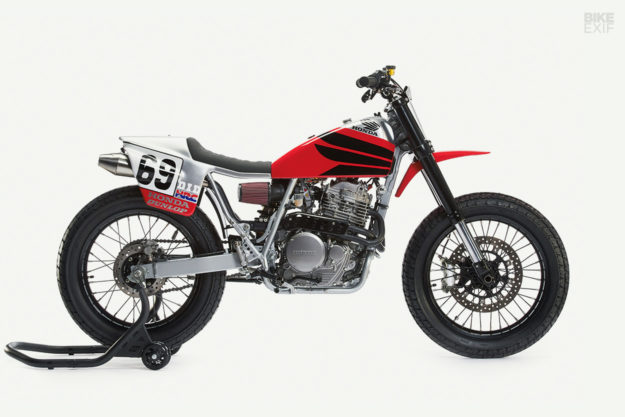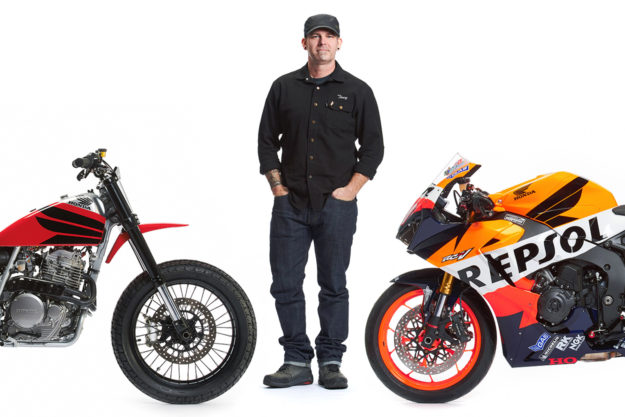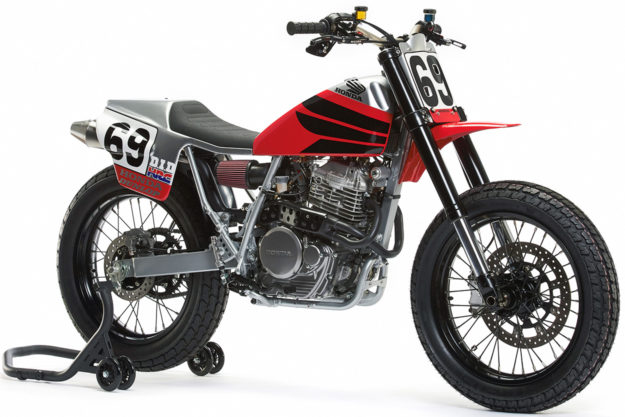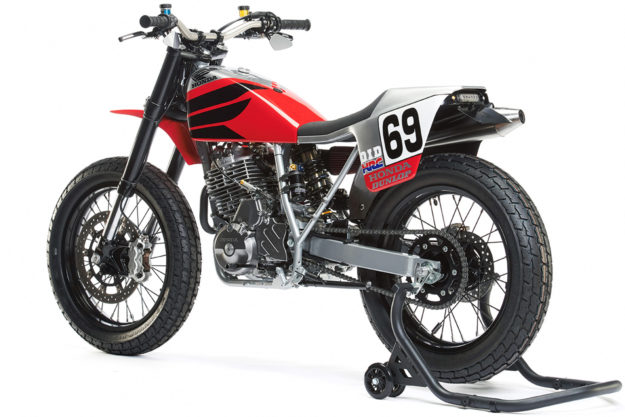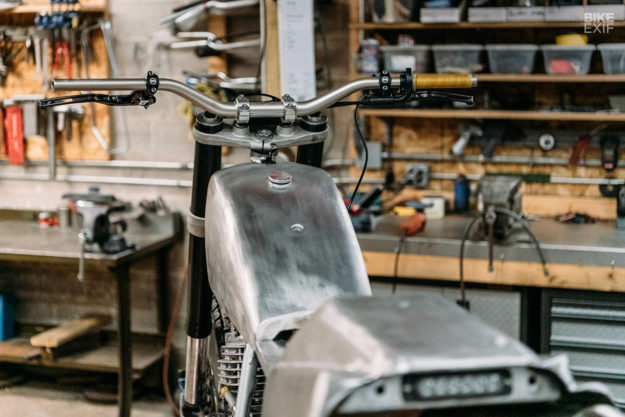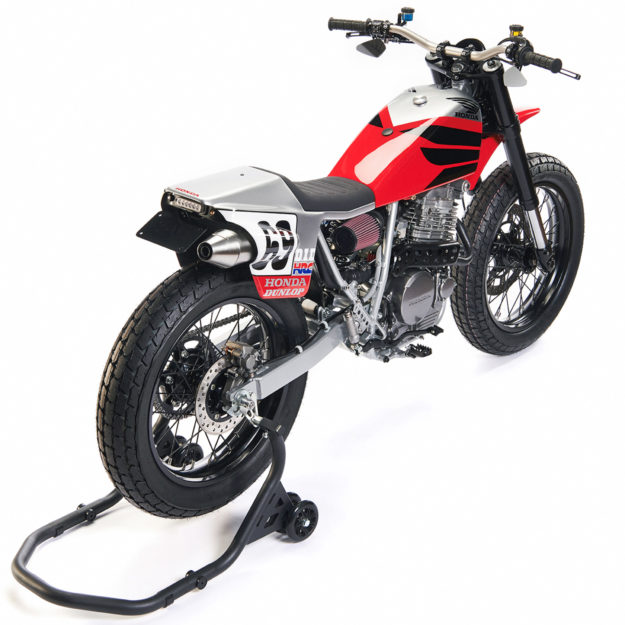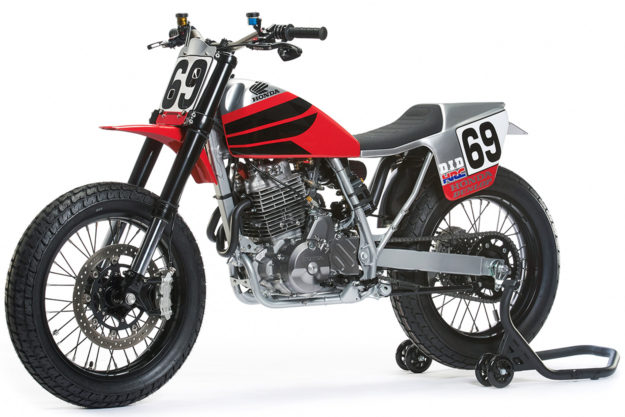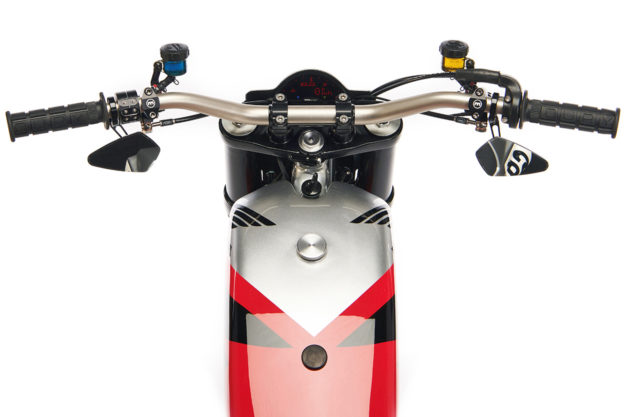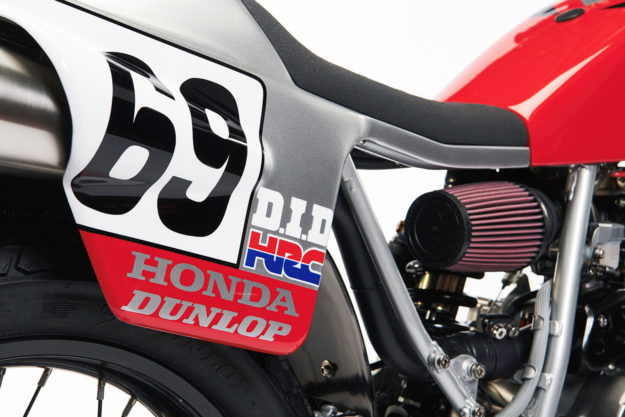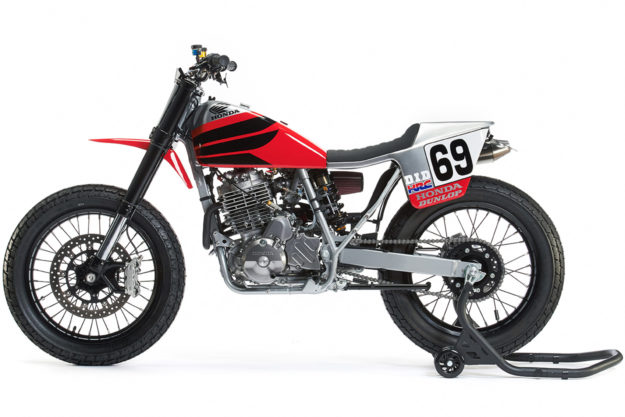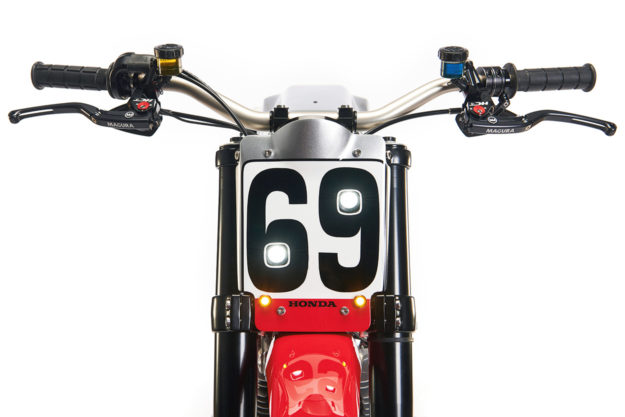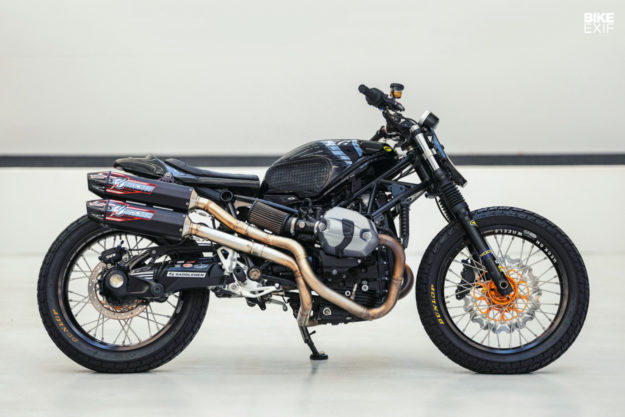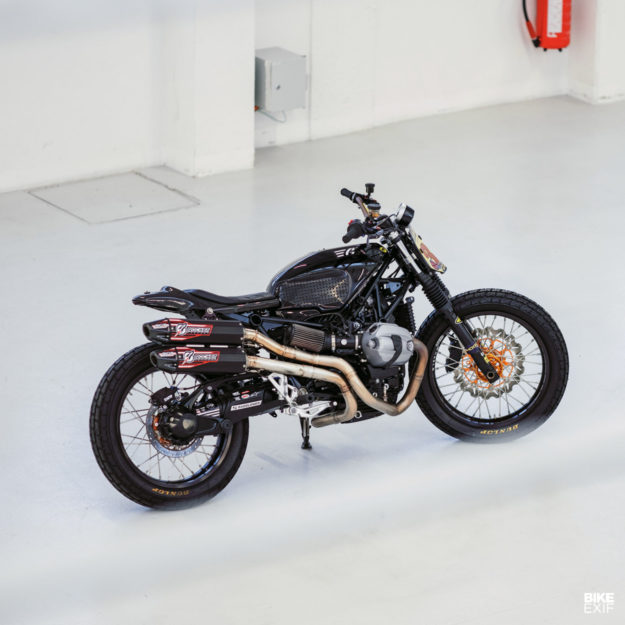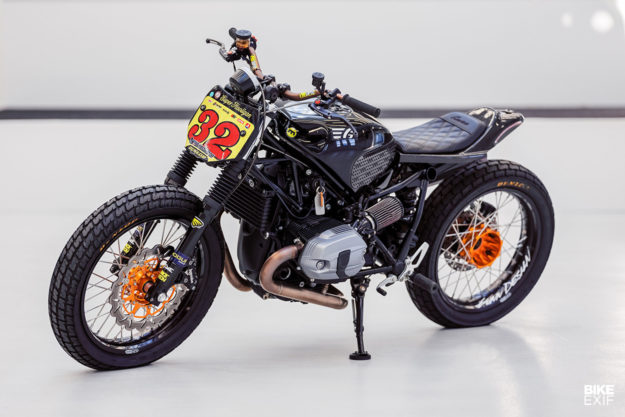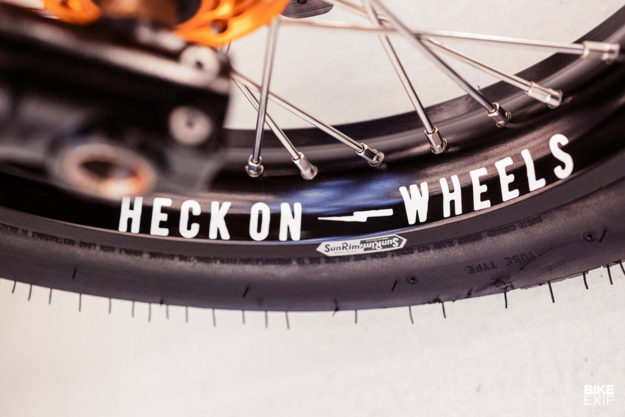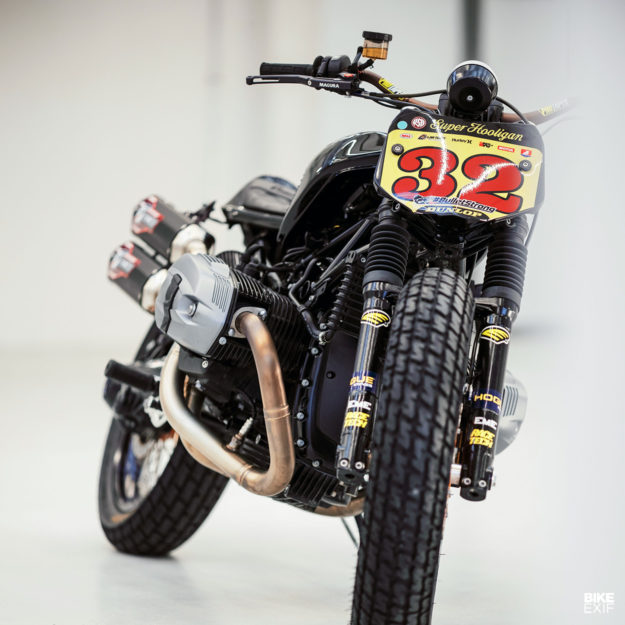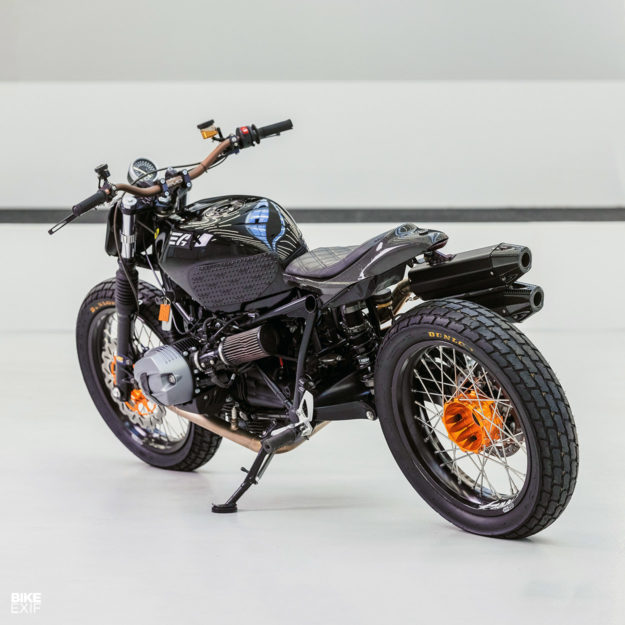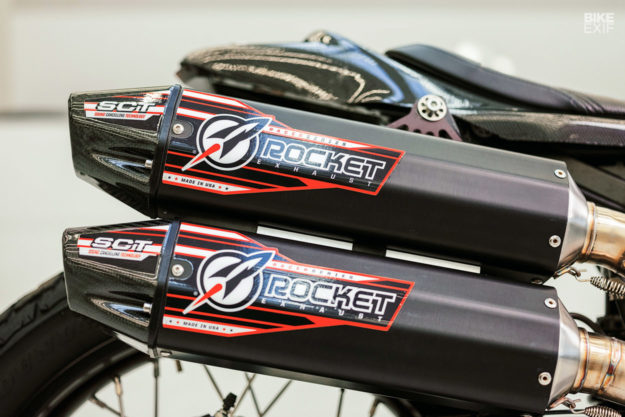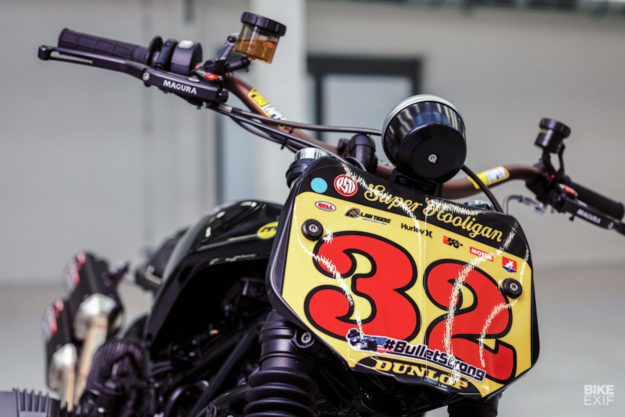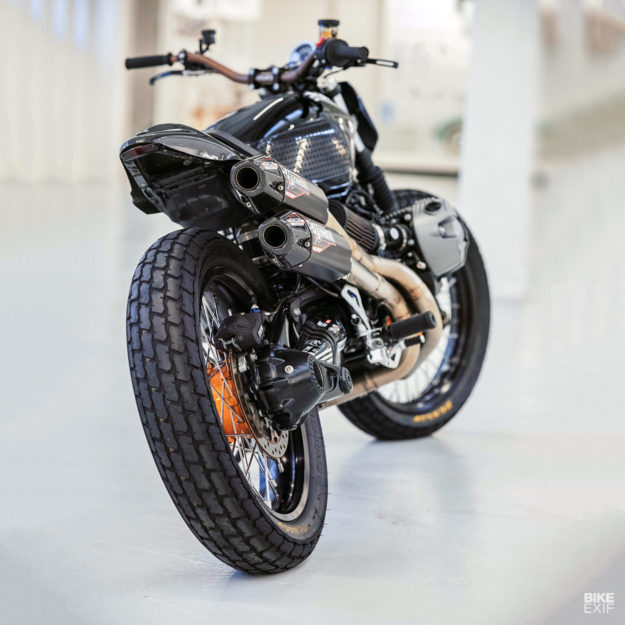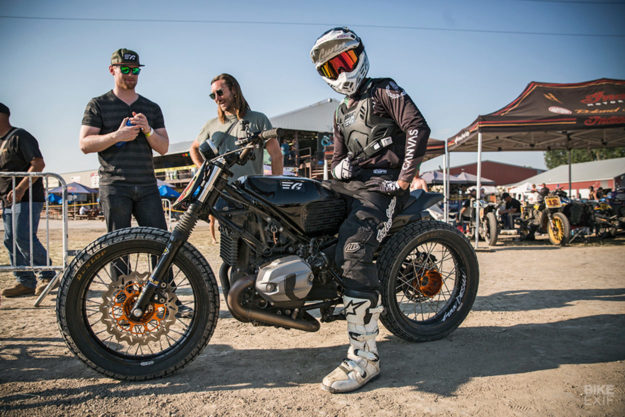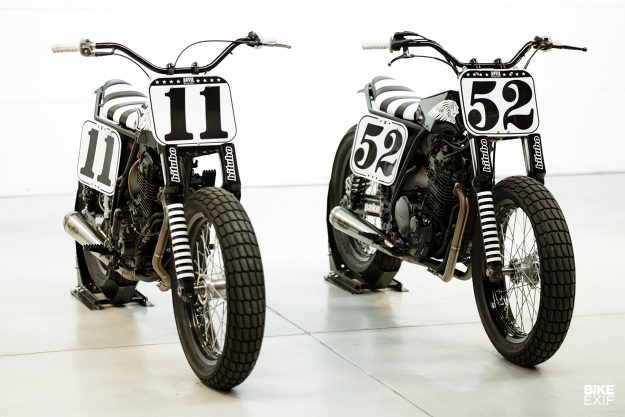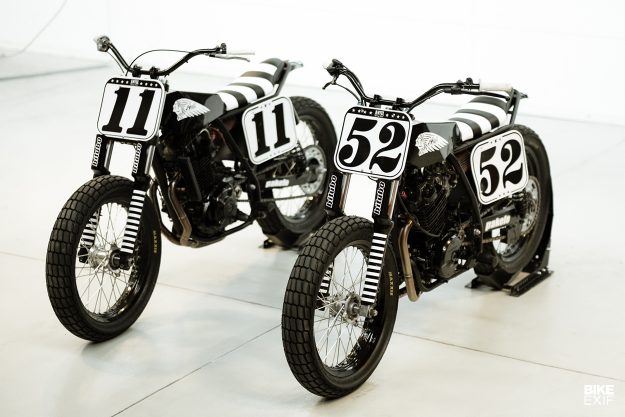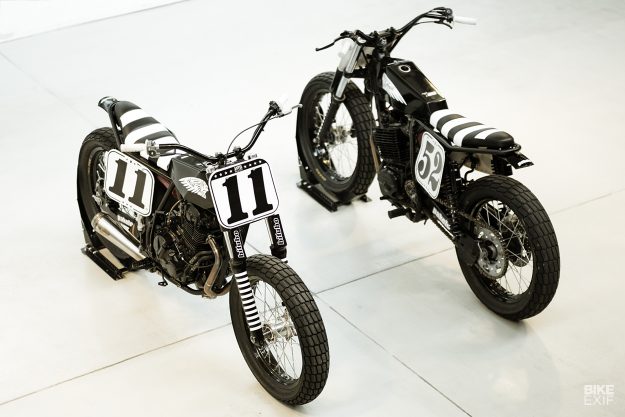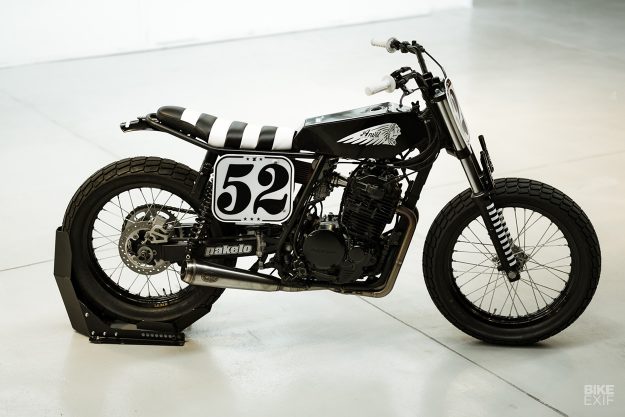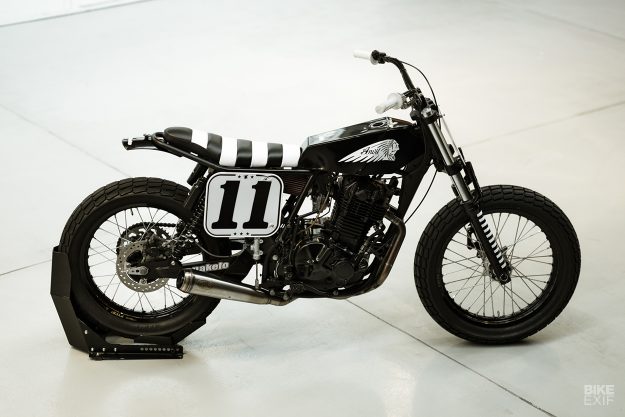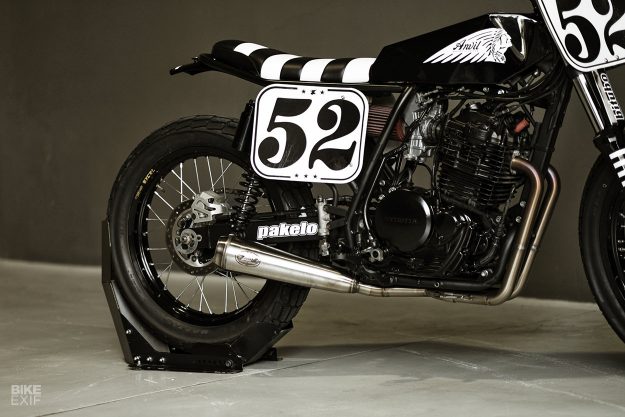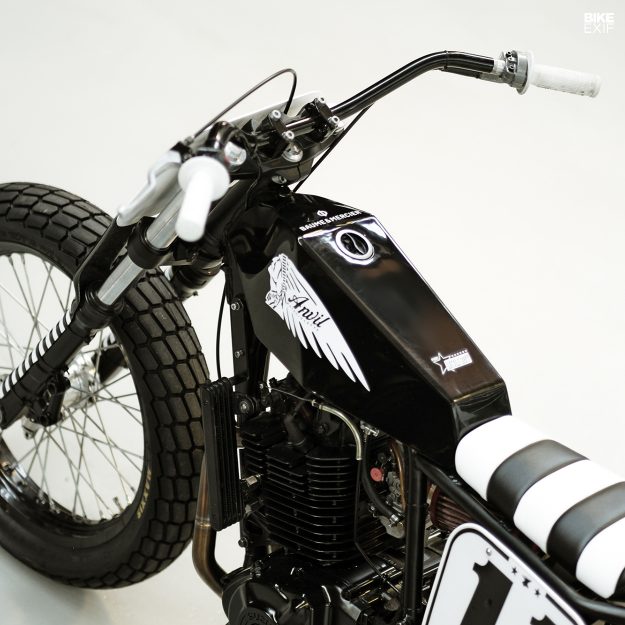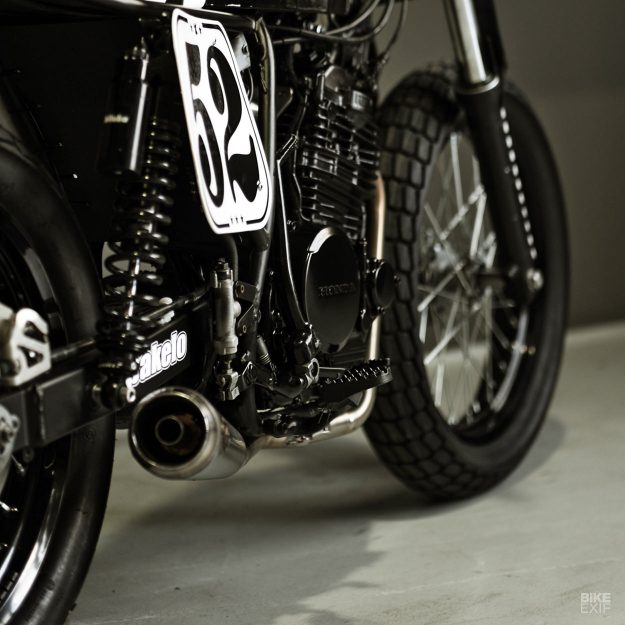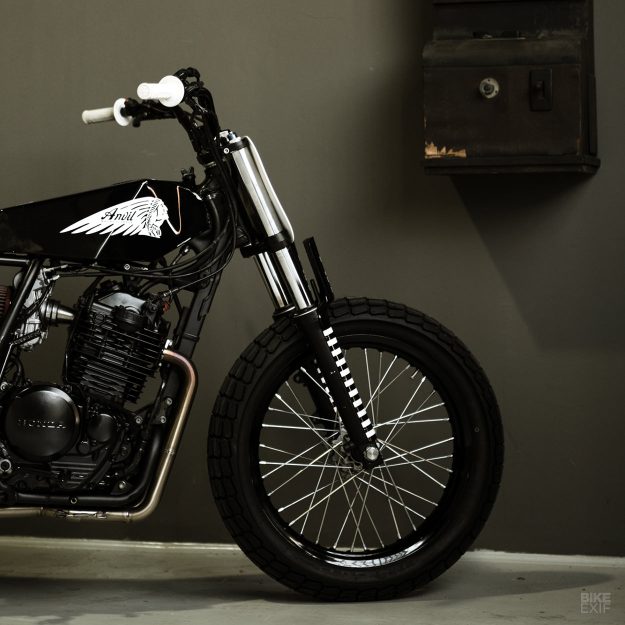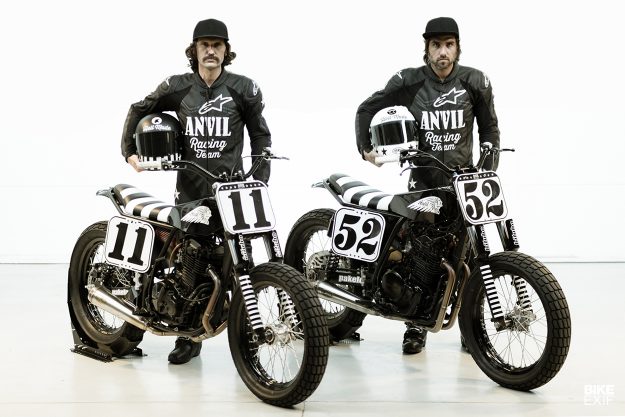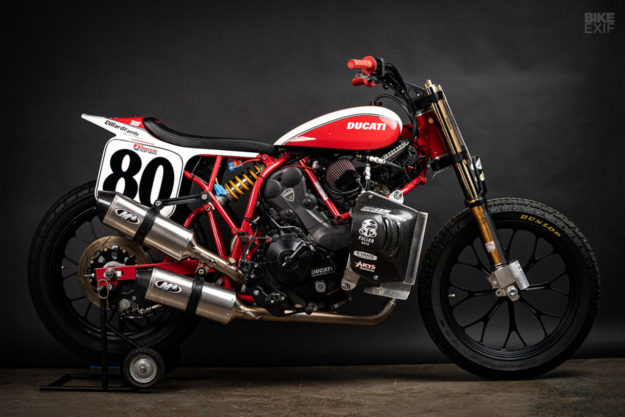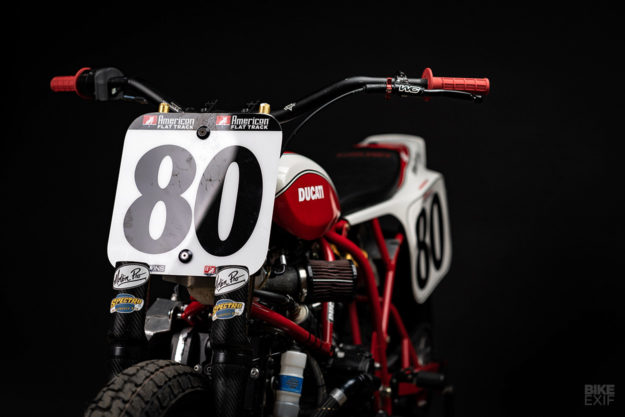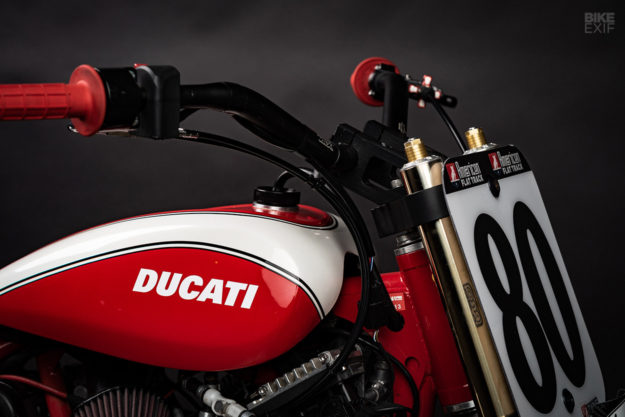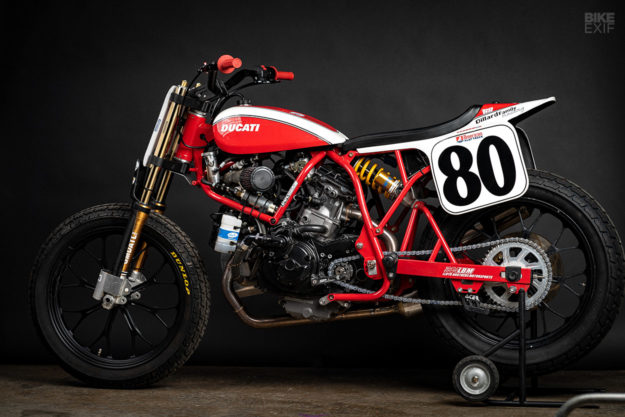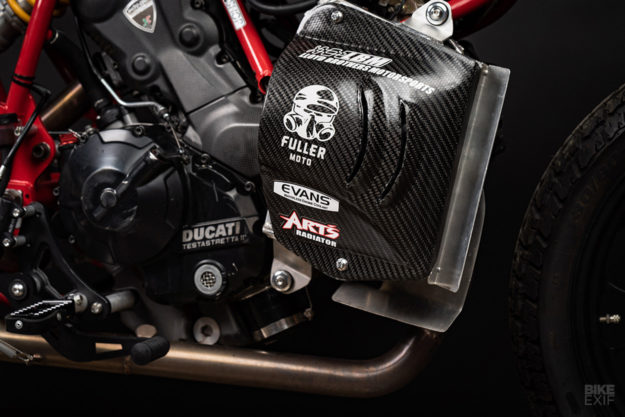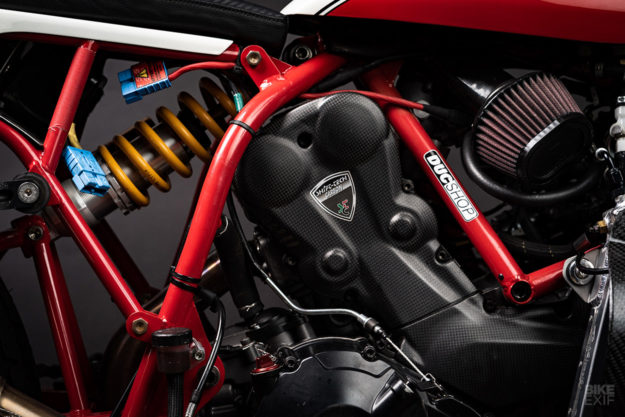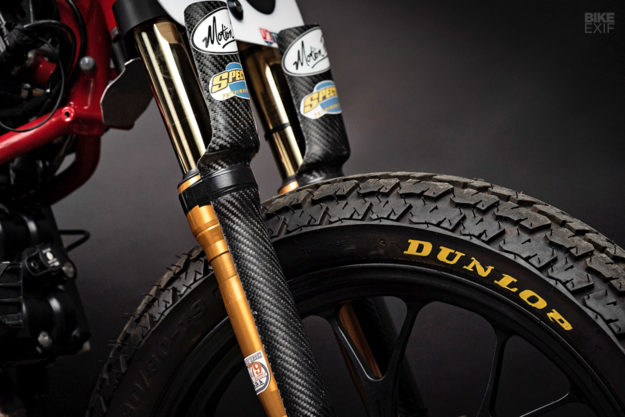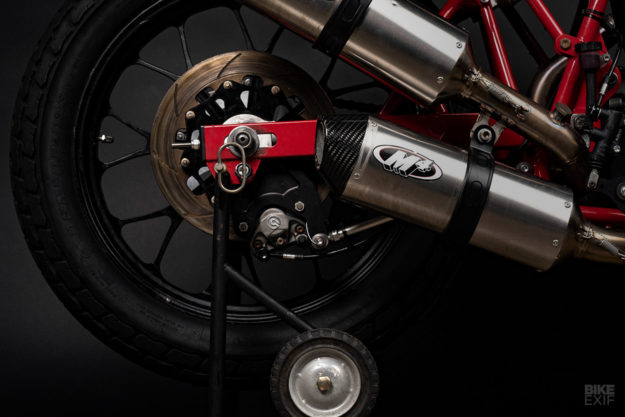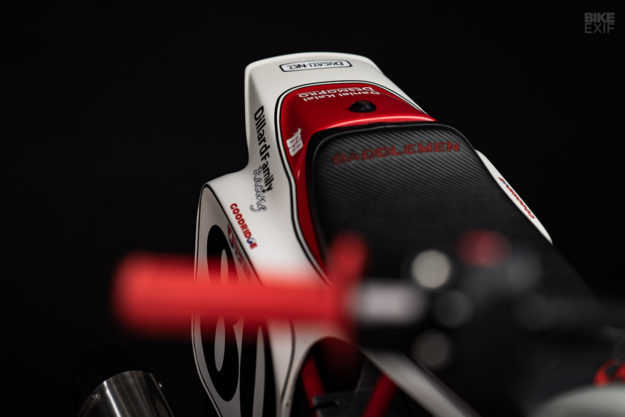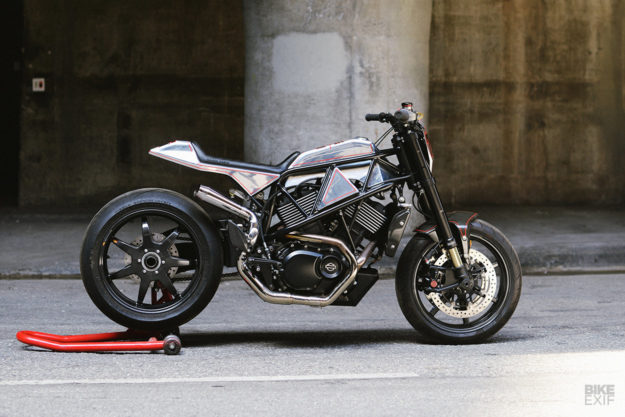
There are some builders who seem to have the Midas touch: everything they create turns to gold. Aaron and Shaun Guardado are in that exclusive group, crafting beautiful racers and customs when they’re not tearing up dirt tracks—or running the Suicide Machine Company business out of Long Beach, California.
After Harley released the XG platform, the brothers were inspired to pay homage to the road-racing lineage of the famous XR750TT—and also showcase the XG750’s performance potential.
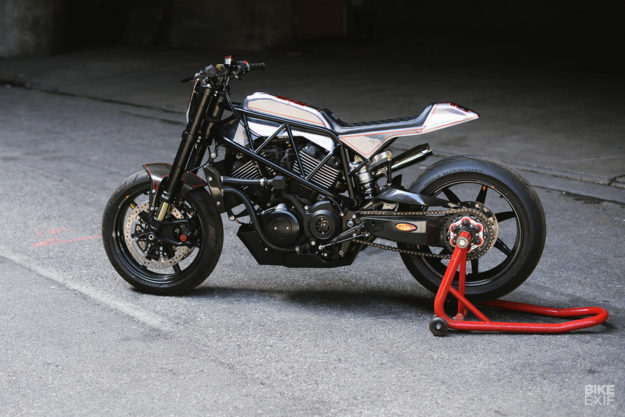
“We set out to turn the tame, street-cruising XG750 into an aggressive, lightweight hard cornering racing machine,” says Aaron. “It’d be a no nonsense, bare bones build.”
If there’s a Harley that ever symbolizes the ‘art of speed,’ this is it. But the only concrete plan Aaron and Shaun had before firing up the grinders was to use a trellis-style frame.

“This style is usually associated with Ducati, and Ducati is synonymous with performance—so it was a good direction to start out in.”
A friend with a genius for engineering helped with the design, and laid out a frame with geometry numbers from both the XR750 and the Ducati 1098. “With the modeling and dimensions outlined in SolidWorks CAD software, we could get started on the actual building of the bike,” Aaron says.
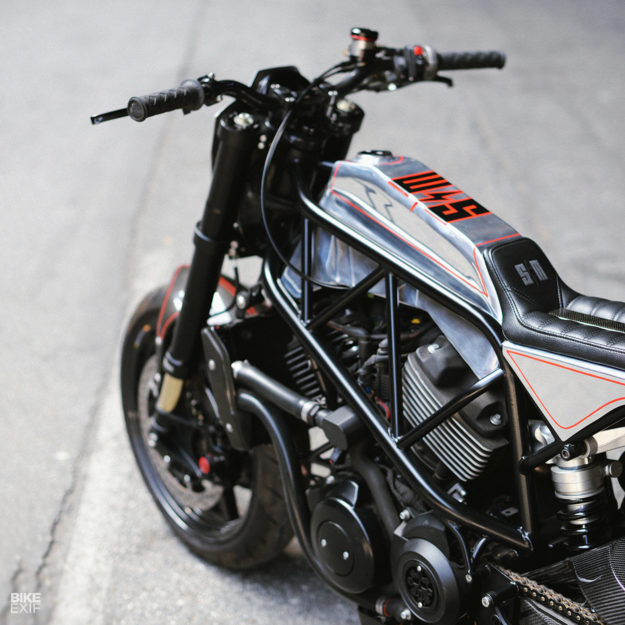
“We could have had the tubes CNC-bent and notched, and assembled it like a kit, but for this first bike we decided to manually construct it.” So Aaron and Shaun hand bent and notched each of the tubes for the frame out of 4130 chromoly—choosing the material for its low weight and high strength.
The frame tubes were tacked up and welded within a week. The design included the rear suspension (and single-sided swing arm) from the Ducati 1098, so SMCO bolted on a carbon fiber swing arm from Blackstone Tek. It’s two full kilos lighter than stock.
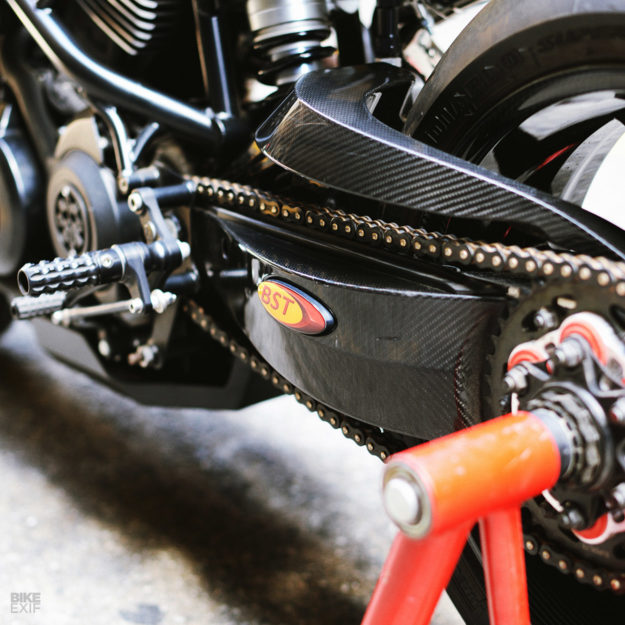
“We paired this swing arm with BST carbon fiber wheels and Öhlins suspension,” says Aaron. “The shock itself needed to be custom built, because of dimension constraints and weight differences between the 1098 and XG750 platforms.
“Öhlins were a huge help in this, and we ended up with a modified BMW S1000RR upper, with a standard 1098 lower mount.”
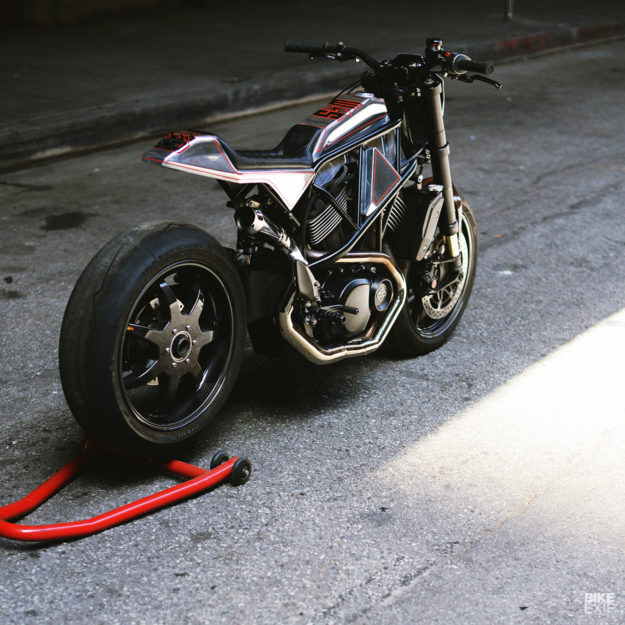
With the rear end suspension locked down, SMCO installed a set of shortened Öhlins FGRT301 forks, clamped in new triples trees with a custom offset.
“Seeing the frame modeled on the computer doesn’t compare to seeing it on the ground with engine and suspension in place. It was now almost a motorcycle, and one that you could throw a leg over and imagine speeding down the road.”
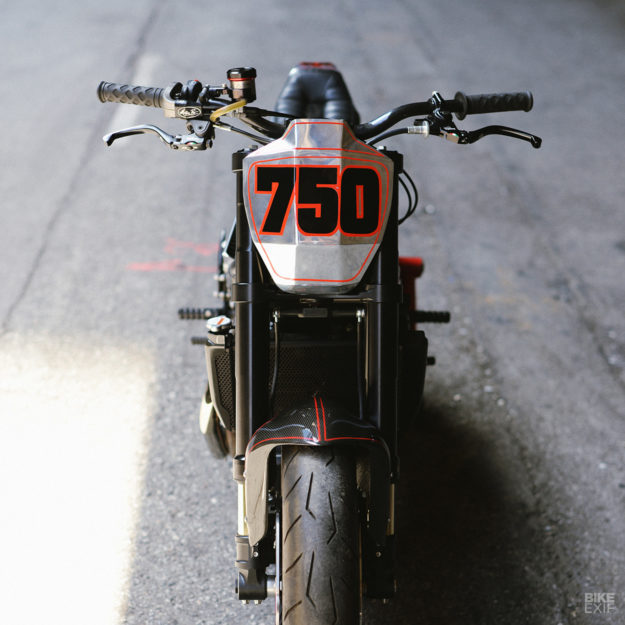
Designing the bodywork took time. Each piece started as a cardboard template that was transferred to aluminum sheet metal, hand cut, and bent and fitted as needed. “Even making the number plate was a complex task,” says Aaron. “It’s 13 individual pieces welded together to form a single part.”
Having a Harley power plant in a trellis frame is unique, so the boys didn’t want to hide the lines. The gas tank was designed after the frame had been completed, and fits between the frame rails and engine.
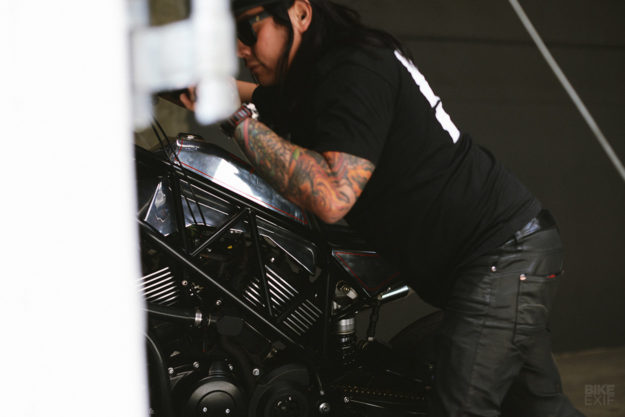
“It was such a tight fit and unconventional shape, we had to come up with a creative solution to access it,” says Aaron. “So we made the engine mounts removable with billet tube clamps from Camburg Racing. You unbolt the two mounts and the engine will drop, or the frame can be lifted up to remove the tank.”
Another challenge was mounting the fuel pump assembly inside the tank. “We couldn’t track down an aluminum mount to fit any surface of the tank, so we took a chunk of aluminum and machined our own with the manual mill.”
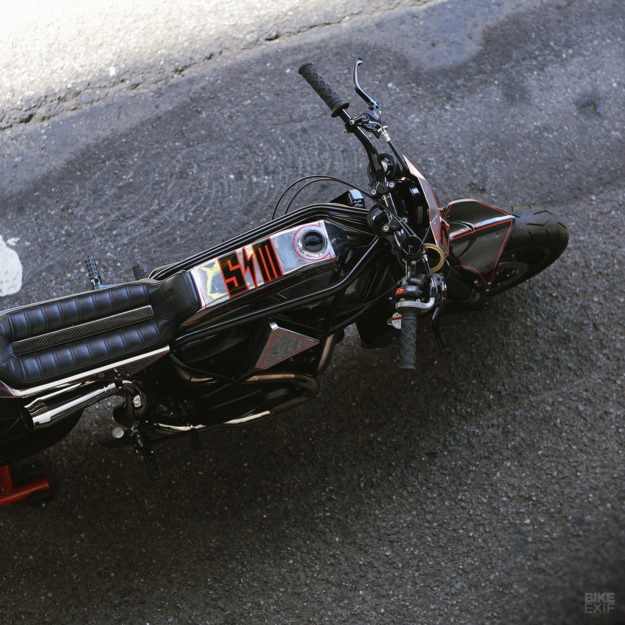
After the major bodywork pieces were completed, one crucial component was still missing: an air intake. “Although small, it took imagination and engineering to get right,” says Aaron. The result is a two-piece design equipped with an integrated K&N filter element.
Like everything else, it fits seamlessly without interrupting the lines of the motorcycle. “It was a challenge to hide most of the hardware and the wiring harness,” Aaron admits. But SMCO have pulled it off: this XG750 looks clean and minimalistic.
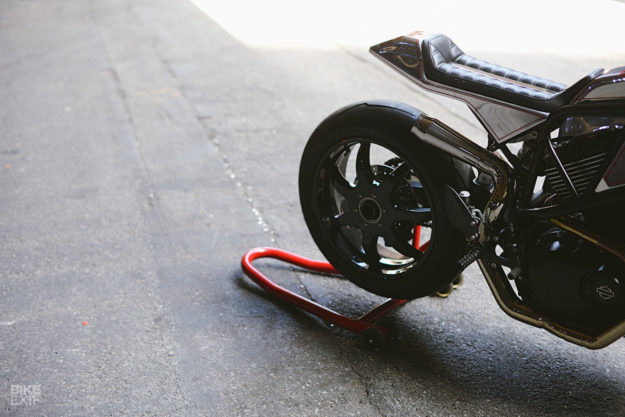
It helps, obviously, that it’s a show bike that’s ready to race. So it doesn’t need the regulatory clutter of a street bike. But the XG750 is water-cooled, so Aaron and Shaun had to find space for a radiator and coolant hoses within the trellis frame.
They’ve chosen a Ducati Hyperstrada radiator, hung from the frame in the same way the engine is. “We were very mindful in routing the coolant hoses so they fit nicely within the lines of the bike,” says Aaron. “So we machined an aluminum ‘junction block’ for the hoses, which also houses the thermostat and OEM temp sensor.”
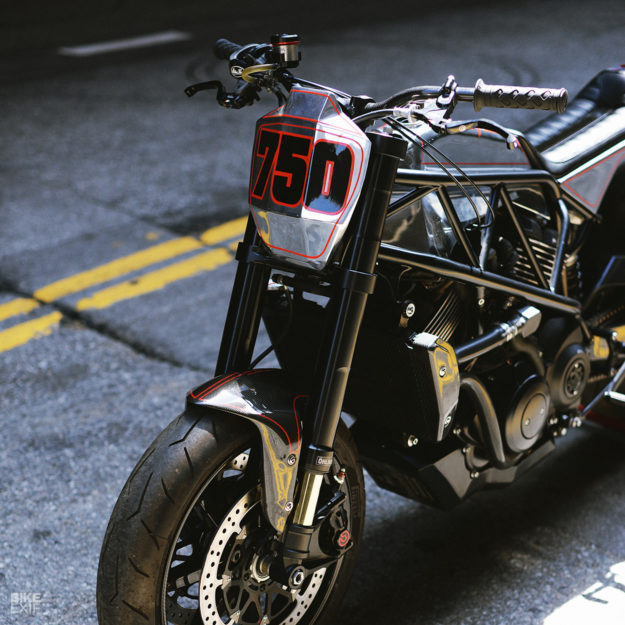
The cooling system was a minor challenge compared to the electronics—which were needed for the fuel injection system and ECM. And the open frame didn’t give much space to hide electronic components. “We needed to find room for a battery, plus the sensors, relays and harness, which are typically stored under the seat area. Which we didn’t have much of,” says Aaron.
The solution was to store these components in a belly pan. “It was an afterthought that turned out to work better than we could have planned. We broke out the cardboard templates and extended the skid plate into a full blown belly pan.”
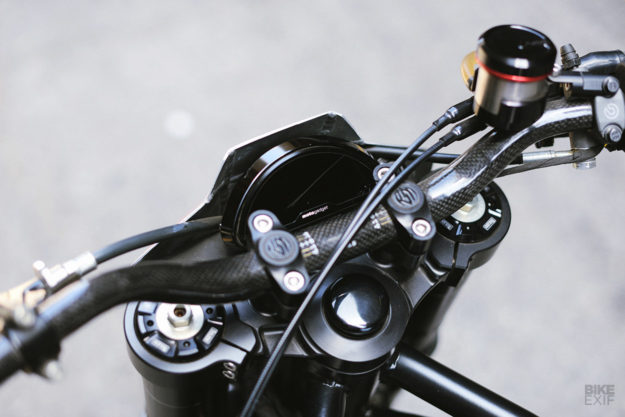
SMCO went with a compact Speedcell Lithium Motorsports battery pack, weighing just less than 1.6 lbs. They also opted for a Motogadget MotoScope Pro display with a mount from Kraus Motor Co. “It shows speed, rpm, voltage, temp and lap timing and interfaced with the stripped down OEM harness and sensors easily.”
With the XG750 nearing completion, it was time to tackle the exhaust system. “It’s something that can really make or break a bike. It should complement the other components and flow nicely with the overall lines without ‘taking away’,” says Aaron.
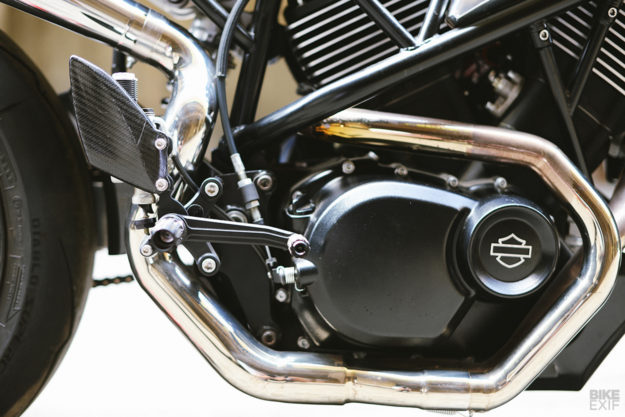
The trellis frame and aluminum bodywork are very angular and geometric, so having a swoopy exhaust wouldn’t fit the build. An angular exhaust sounds contrary to common sense, but after a several mock-ups the final design works perfectly.
It’s a full stainless system, starting with 1½-inch headers, which step up to 1¾ before going into a collector. The system terminates with a 2¼-inch Burns Stainless reverse megaphone, ordered to spec.
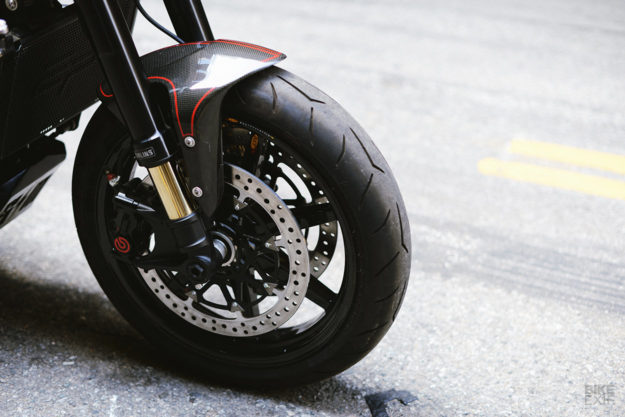
It’s all incredibly high quality work and the finishing details are top shelf too: Brembo brake calipers front and rear, paired with Brembo T-Drive rotors and RCS hand controls mounted on full carbon fiber handlebars.
For even more weight savings, SMCO have upgraded the Ducati 1098 cush drive to a Superlite Hyperflex billet alloy sprocket carrier. The throttle is a MotionPro Rev2 assembly—with interchangeable throttle cams—to give a smooth, fully customizable power delivery.
Aaron and Shaun also fabricated the foot controls, using RSD prototype components that they cut up and mixed and matched.
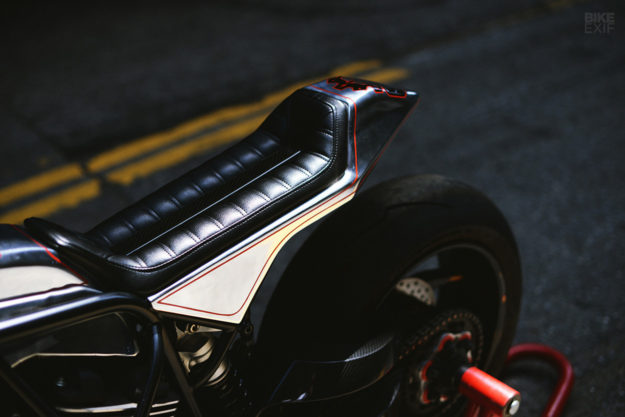
The very last item fitted was a custom seat from Saddlemen. “They did an amazing job on the fit and finish,” says Aaron. “They built a carbon fiber seat pan which is paired with top quality leather. It really brought everything together without standing out on its own.”
Paint is something that the brothers prefer to outsource, so Pete Finlan from Hot Dog Customs added some discreet pinstripes and branding.
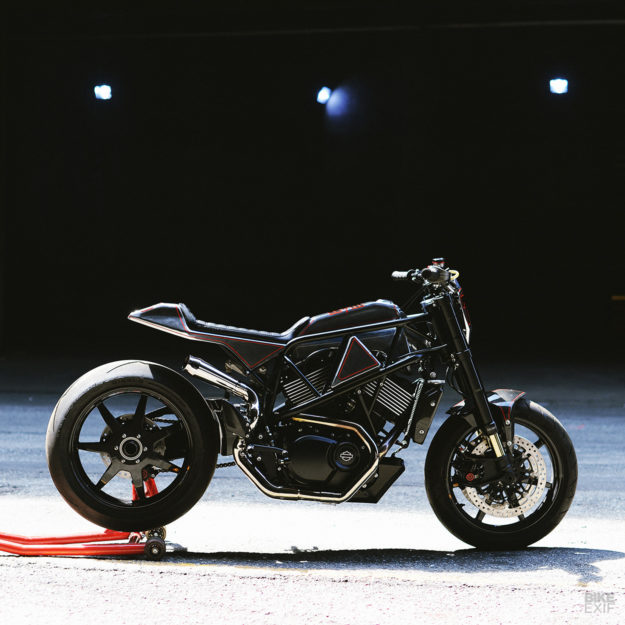
“We set out to build a motorcycle that paid homage to Harley’s racing heritage,” says Aaron. “At the start we didn’t really have a grasp on what the final product would be. It wasn’t a fully mapped-out build, and a lot changes were made as we went along.”
“But it worked out, and worked out well. It could have come out looking a million different ways, and this is just one of the ways. It’s not right or wrong, it’s just a product of our combined imaginations.”
We’d say it’s very right indeed.
Suicide Machine Co. | Instagram | Images by Jose Gallina
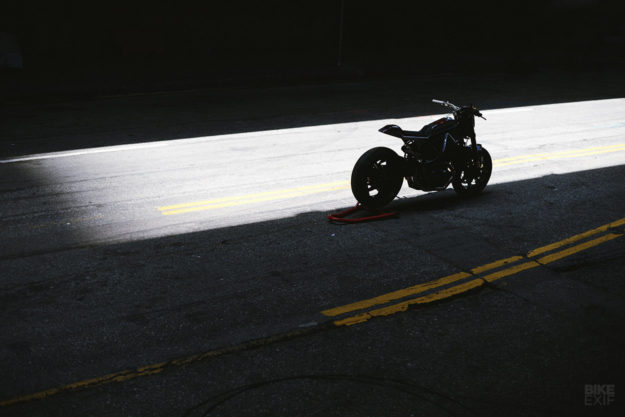
![]()
![]()
![]()
![]()
![]()
![]()
![]()
![]()
![]()
![]()
